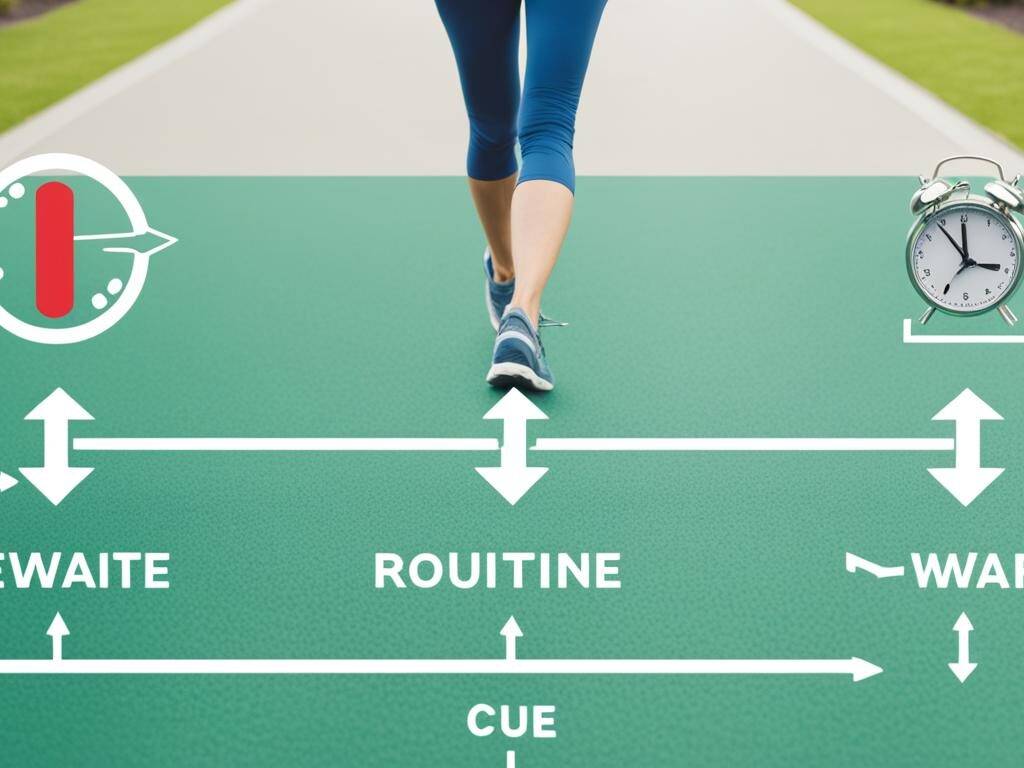Looking back on my personal growth journey, I often found myself inspired by things I read. But, turning this inspiration to real, long-lasting change was hard. Many of you might have felt the same. The hard part is not knowing the importance of habits but actually making these habits stick.
The secret to overcoming this challenge is simple, not some hidden secret. It’s about using science-backed strategies. These strategies help turn our inspiration into actions that make a difference. “Atomic Habits” by James Clear is key here. It has changed the way I look at forming habits and making changes that last.
In this article, we’ll explore the insights and tips from “Atomic Habits”. We’ll see how small changes can add up to big results. We’ll look at ways to beat challenges and make a new way of life. Join me as we learn the secrets to reach our full potential and turn our dreams into reality.
Key Takeaways:
- Understand the science behind habit formation and the four-step habit loop of cue, craving, response, and reward.
- Discover strategies for designing good habits and eliminating bad ones using the Four Laws of Behavior Change.
- Learn how to overcome obstacles to habit formation by increasing friction for bad habits and reducing friction for good habits.
- Leverage the power of the “Paper Clip Strategy” to track progress and stay motivated.
- Explore the concept of the compound effect and how small, incremental changes can lead to profound long-term transformation.
- Understand the importance of environmental design and how to create a productive, habit-supporting environment.
- Unlock your potential for sustainable growth and long-term change by applying the principles from “Atomic Habits”.
The Power of Habit Formation
According to the excerpt from “Atomic Habits”, building a habit loop happens in four steps. These are cue, craving, response, and reward. Each habit follows this pattern. The brain uses these steps in the same way every time. Initially, the cue starts the brain. This creates a craving that drives a response. Finally, there’s a reward to satisfy the craving. These steps together are a feedback loop. It helps make habits automatic. Knowing this process helps us make good habits and break bad ones.
“The four-step pattern of habit loop – cue, craving, response, and reward – is the backbone of every habit, and the brain runs through these steps in the same order each time.”
Mastering the habit loop can start a cycle of good habits. This turns your goals into easy, regular activities. To do this, you need to make the cue clear, the craving attractive, the response simple, and the reward fulfilling. This method is very effective. It helps you build lasting habits for a big change.

Learning the science of habit formation is the first step to control your actions. By clearly understanding each part of habit forming, you can tweak the habit loop for your benefit. Then, you can improve your life one step at a time.
From Inspiration to Action: Building Habits that Stick for Long-Term Change
The author breaks down habit-making into simple steps. This helps us turn good intentions into strong actions. Known as the Four Laws of Behavior Change, it’s the secret to lasting habits.
Part of making a good habit is about solving a problem. We look at what triggers the habit and what we get out of it. Then, we make the good habit easy and rewarding to do.
“The key to building lasting habits is to focus on creating a sustainable environment, not on pushing through stress and struggle.” – James Clear, author of “Atomic Habits”
This method helps us act on our dreams consistently. We tweak our surroundings and actions to fight challenges. The result is a powerful change from small, regular steps.

Next, we focus on beating the usual barriers to habit success. We learn how to deal with things that make it hard to stick to good habits. This makes the right habits easy and the bad ones hard.
Overcoming Obstacles to Habit Formation
Turning inspirations into lasting habits is tough. But insights from “Atomic Habits” can help beat the habit roadblocks we face. You can fight bad habits by making them hard to do and good habits easy and inevitable.
The book also talks about the “Paper Clip Strategy.” It means using visual signs to track progress. This trick keeps you motivated and accountable. To succeed, you must find and tackle the habits’ hidden challenges.

“Atomic Habits” teaches strategies to ease new habit starts and use visuals for feedback. By changing your surroundings and removing obstacles, success becomes easier. You can make your dreams real with the right setup.
The Compound Effect of Small Changes
James Clear, in “Atomic Habits,” highlights how tiny choices and slow gains often lead to real change. He encourages us to focus on making tiny, 1% better efforts instead of aiming for perfect results. This is because aiming for perfection can block our way to long-lasting growth.
Even spending just 2-5 minutes every day on a new activity can make a big difference in the long run. The trick is to get good at regularly doing this activity, rather than trying to do too much from the start. The goal is to make it a part of your routine before you work on making it perfect.
“Perfection is the enemy of good, and steady progress is better than no progress at all.”
Focusing on the compound effect and being happy about small wins can have a big impact on lasting change. Celebrating these little gains is key to unlocking your potential for a real transformation. This approach shows us that making small, steady improvements is essential for turning these habits into something that sticks.
Mastering the Environment
In Chapter 6, “Atomic Habits” talks about how our environment greatly affects what we do. It often influences us more than being motivated or having strong will. The author says our habits change depending on the situation. So, we usually pick what’s in front of us, even if it’s not the best choice. He suggests that we carefully set up our surroundings. This way, we can put helpful signs everywhere and take away things that distract us.
The writer believes that what we see affects our actions the most. Thus, planning our environmental design is key. It helps us make good choices without a lot of effort. By making our space work for us, we can more easily go after the lifestyle we want.

For instance, if you put a book near your bed, you might read more. Or, if you don’t see unhealthy snacks, you won’t eat them. The idea is, we can shape our world to help us make the right choices. This teaches us how to control our habits for the better.
Conclusion
As we close our trip through “From Inspiration to Action: Building Habits for Change,” it’s hard not to be excited. We’ve looked at how the book “Atomic Habits” gives us tools to turn our dreams into real actions. The big lesson is that changing for the better takes time and lots of small steps.
Now we understand the key four steps to making a habit: first, the trigger. Then the wish for something. Next, your reaction. Finally, what you get out of it. Knowing these steps means we can create habits that actually last. Making triggers obvious, the wish tempting, actions simple, and the result fulfilling is what will make big change.
Don’t forget, we also talked about facing challenges, setting up our space to help our goals, and not rushing to be perfect. As we look ahead, I urge you to think about what we’ve learned. And then, start using these methods in your daily life. The important thing is to keep going, no matter how small the step. If you do, you’ll see big changes and reach amazing goals. Here’s to the journey ahead!

